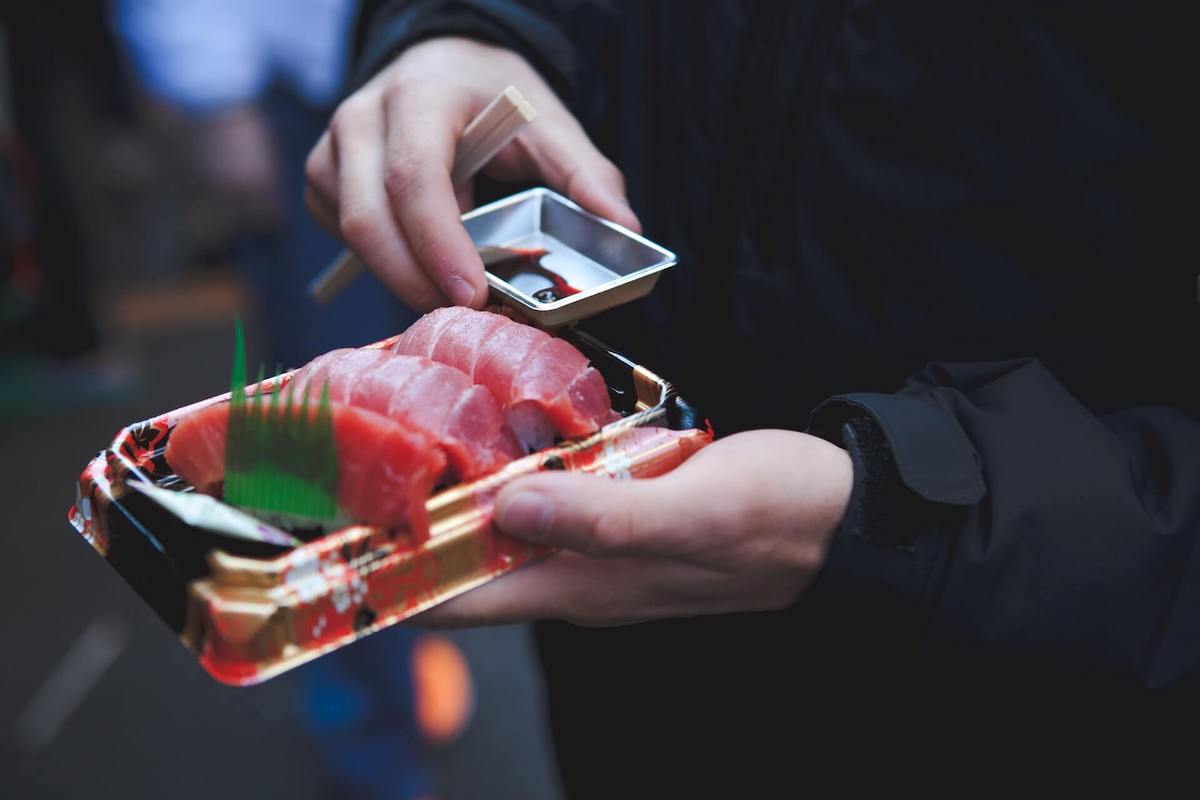5 Types of Tuna used in Sushi and Sashimi
Tuna (Maguro) is considered a valuable fish used for sushi and sashimi by many Japanese chefs. There is not just one but many tuna varieties. Each comes with a different taste and texture based on the makeup of its parts: lean meat (akami), medium fatty belly (chutoro), and fatty belly (otoro).
1. Bluefin Tuna (Pacific Bluefin, Southern Bluefin, and Atlantic bluefin)
Bluefin tuna (Kuro Maguro) is the largest species, weighing over 1000 pounds or 454 kilograms. Bluefin tuna has dark red flesh and a fatty and delicious flavor, making it expensive and highly desired. The owner of a Japanese chain even bought a bluefin tuna for over $3 million in 2019. Bluefin tuna has three types: Pacific bluefin tuna, Southern bluefin tuna, and Atlantic bluefin tuna. Unfortunately, they are on the verge of extinction, and countries are attempting to regulate fishing. Fresh bluefin tuna tastes best in the fall and winter when the fish store up fat to protect against the cold temperature.
2. Bigeye (Mebachi Maguro or Ahi)
Bigeye tuna has a chunky body, a huge head, and big eyes. This tuna, found in tropical and subtropical ocean waters, can dive the deepest. Compared to bluefin tuna, it has more lean red meat or akami. It also has more fat content than yellowfin tuna because it swims in cooler water. Bigeye is one of two species along with yellowfin tuna that are called ahi in Hawaiian.
3. Yellowfin (Kihada Maguro or Ahi)
Another type of tuna is yellowfin tuna, which has long yellow fins and a yellow stripe on its slender body. It has less fat and more lean meat than bluefin tuna. The color of its flesh is lighter than bluefin, and the taste is mild and meaty. In Hawaii, yellowfin is known as ahi and is often used to prepare poke bowls, which are cubes of marinated raw fish over rice.
This fish is often confused with yellowtail, another popular sushi topping. Although some places market yellowtail as tuna, yellowtail is not tuna but Japanese amberjack or Hamachi.
4. Albacore (Bintoro Maguro)
Albacora is also known as the chicken of the sea because of its large number. It has a small size, white flesh, and mild flavor. In the United States, albacore is a popular sushi topping. However, it isn’t a traditional sushi topping because albacore was not common in Japanese waters. At the time, the pale color and soft flesh looked unappealing. Now sushi chefs use the tataki method of lightly grilling the outside with a torch to bring out its flavors.
Some restaurants in the United States substitute albacore with escolar, another fish with a similar taste and texture. However, many countries like Japan ban escolar. Escolar consumed in large amounts can cause digestive problems.
5. Skipjack (Katsuo Maguro or Aku)
Skipjack tuna is known as Aku in Hawaiian and Katsuo in Japanese. They are small fishes similar to mackerel and taste quite fishy and bloody. Hence, it’s usually cured or seasoned. A chef may prepare raw skipjack by tataki or searing with a torch to cook the outside while leaving the inside uncooked. Katsuo may have grated ginger and green onion for extra flavor.

